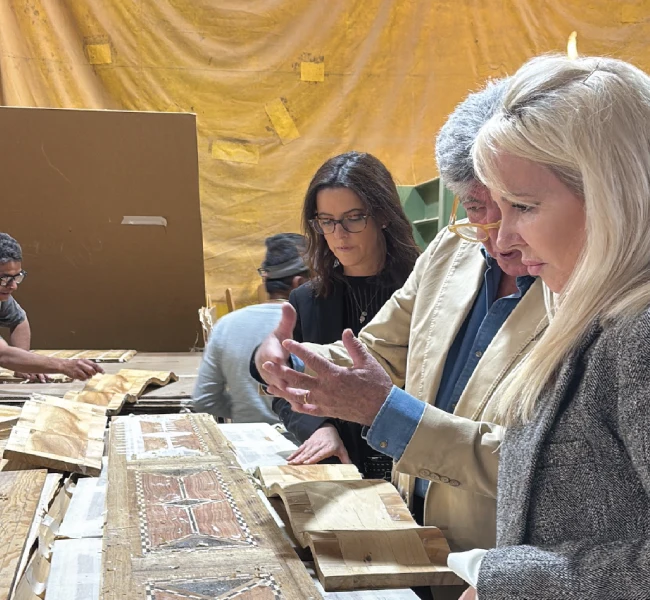Introduction: A Return to Craft, Soul, and Story
Beauty is a given to the design in today’s luxury interiors, but discerning clients seek something deeper—authenticity, emotion, and enduring meaning. They insist on spaces that evoke a feeling and create a state of being aligned with their aspirations.
This shift is not accidental—it’s a response to the times. The COVID-19 pandemic redefined the role of the home, turning it into a sanctuary, a workplace, and a space for connection. The rise of remote work deepened this need for functionality and emotional comfort. Global supply chain disruptions prompted a renewed appreciation for quality, reliability, and locally crafted pieces. And growing environmental awareness has inspired a more thoughtful, values-driven approach to design.
Today’s clients are no longer satisfied with trend-driven spaces. They crave emotional connection—homes that echo their values and create a sense of grounding. For many, legacy has also become a priority. High-net-worth individuals are curating environments that tell their story—investing in pieces that will be cherished now and inherited later.
In this evolving design landscape, handcrafted, artisanal furniture has become a defining expression of modern luxury. It speaks not only to aesthetic excellence but to something deeper—story, soul, and substance. For those of us dedicated to creating spaces that are both timeless and transformative, embracing this return to authenticity isn’t just an opportunity—it’s a responsibility.
The Allure of Artisanal Craftsmanship
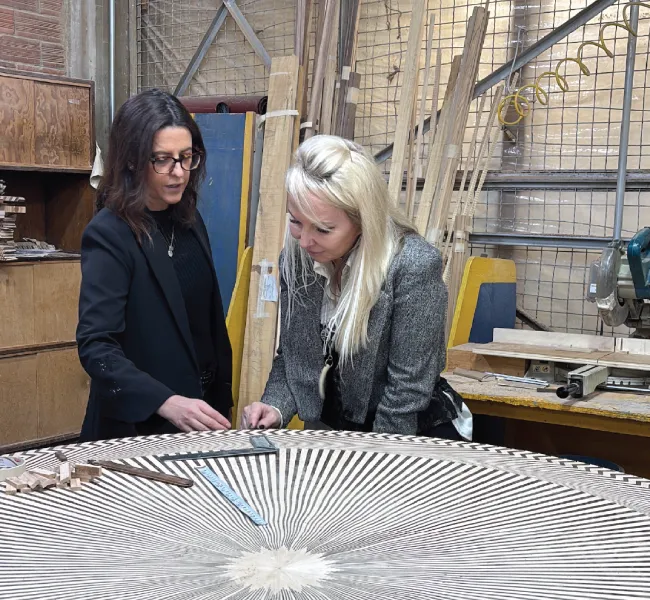
True luxury lies in the details—those details are handcrafted in today’s most refined homes. Artisanal furniture has become more than a design choice; it is a declaration of intention, taste, and personal legacy.
Each handcrafted piece reflects the soul of its maker. From the delicate curve of a carved leg to the quiet perfection of a hand-rubbed finish, these works are infused with human touch—something no machine can replicate.
During a recent trip to Mexico City, Anita Lang visited the renowned workshop of Alfonso Marina, a fourth-generation furniture atelier celebrated for their commitment to old-world craftsmanship. There, she encountered a newly released table designed by Creative Director Isabel Marina—an extraordinary piece featuring over 1,300 pieces of inlaid wood on the tabletop alone.
This wasn’t just design; it was devotion. It took two full weeks to assemble the top, and each piece of wood was carefully cut, placed, and finished by hand. And that was only the beginning. The full piece underwent multiple sanding, staining, and hand-rubbing stages to achieve a finish that radiated depth, warmth, and quiet luxury. No shortcuts. No mass production. Just an unwavering commitment to excellence.
The result? A piece destined not just for today’s home—but for future generations. A legacy object. A true heirloom.
This is the essence of luxury furniture customization. Every handcrafted item becomes an extension of the homeowner’s values, style, and story. In spaces where every element is intentionally selected, these bespoke pieces anchor the design with timeless authenticity and emotional resonance.
Why Bespoke Furniture Speaks to the Luxury Client
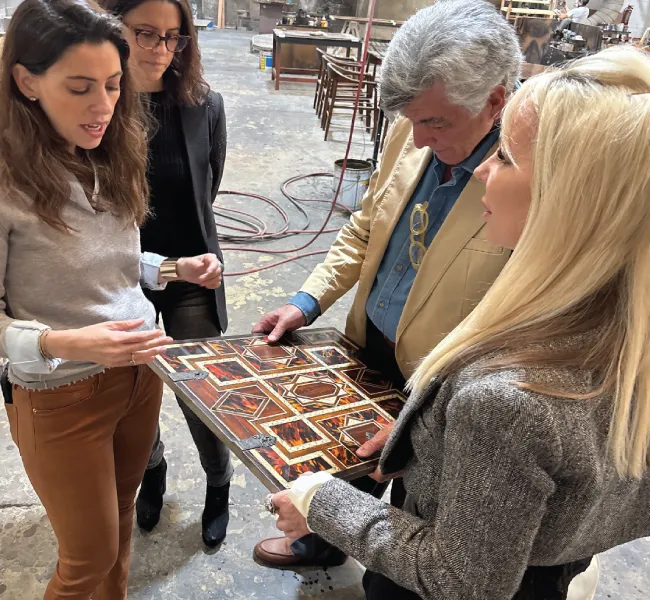
In the high-end residential interior design world, no two clients—and no two homes—are alike. That’s why mass-produced furniture often falls short. It can’t capture the nuance, personality, or emotional resonance luxury clients seek. Bespoke furniture, on the other hand, rises to meet that expectation.
At its core, custom design is about authorship. It allows clients to co-create something meaningful—a piece that reflects their unique vision, values, and lifestyle. Every decision is intentional, from the silhouette to the finish.
Here’s why custom pieces resonate so profoundly with luxury homeowners:
- Tailored Proportions: Designed to fit architectural spaces precisely—no compromising, no filler.
- Material Mastery: From rare woods to hand-forged metals, clients choose finishes that reflect their style and elevate their interiors.
- Functional Art: Pieces are not just beautiful—they are thoughtfully designed for how the client lives, entertains, and relaxes.
- Meaningful Collaboration: The design process becomes a creative journey between designer, artisan, and client—making the result deeply personal.
Bespoke furnishings also bring a powerful sense of exclusivity. When a client invests in a one-of-a-kind piece, they’re not just acquiring furniture—they’re acquiring identity. That piece cannot be replicated, mass-produced, or purchased by anyone else. It’s theirs alone.
And in homes designed to inspire, entertain, and endure, this sense of authorship matters. Clients want to walk into a room and see not just curated beauty—but their story, their legacy, and their presence etched into every detail.
Honoring Craft, Supporting Community
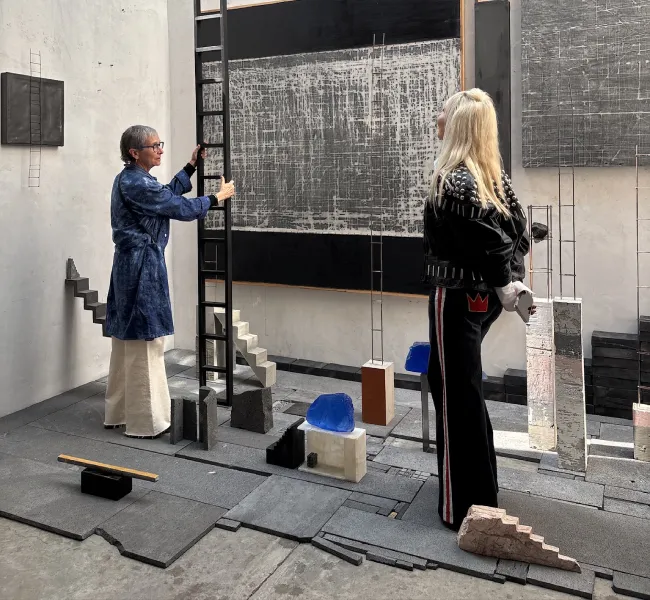
Luxury today is not just about aesthetics—it’s about alignment. More than ever, high-net-worth clients want to know that their investments support something meaningful. That their furniture is not only beautiful, but purposeful.
To illustrate this, consider the enduring appeal of a Hermès silk scarf. Yes, it’s exquisitely designed—an iconic symbol of elegance. But it’s also deeply purposeful: each scarf is screen-printed by hand in the Hermès ateliers using centuries-old techniques, preserving artisanal traditions that would otherwise vanish in today’s fast-paced, mass-produced world. When a client wears one, it’s not just about style—it’s about heritage, craftsmanship, and honoring the human hand behind the beauty.
The same philosophy holds true in interior design.
Choosing handcrafted pieces isn’t just a design decision—it’s an ethical one.
When clients invest in artisanal furniture, they directly support the livelihoods of skilled craftspeople—many of whom are part of multi-generational traditions. These are not anonymous factory workers. They are master artisans, often working in small studios, keeping rare techniques alive with every commission.
This commitment brings layered value to the client experience:
- Economic Impact: Money spent on handcrafted pieces often stays within the local or regional economy, sustaining families and small workshops.
- Cultural Preservation
Clients become stewards of tradition—ensuring that time-honored techniques like marquetry, joinery, and hand-finishing are not lost to automation or convenience. These methods are more than craftsmanship; they are cultural legacies passed through generations.
We saw this reverence for heritage on a global scale with the restoration of Notre Dame Cathedral. After the devastating 2019 fire, artisans from across France were called upon—stone carvers, stained-glass artists, woodworkers—each practicing rare, centuries-old techniques. The world watched not only the rebuilding of a beloved landmark, but the preservation of human skill and cultural identity.
In much the same way, clients who commission bespoke design become part of a greater story—one that honors the hands, histories, and heart behind each piece. They’re not just curating beauty for their homes—they’re preserving the soul of craftsmanship for future generations. - Sustainable Choice: Handcrafted production models favor slower, more ethical approaches—less waste, more care, and better sourcing practices.
As Anita often shares, these collaborations are deeply personal. They’re built on mutual respect and a shared vision for beauty, quality, and meaning. And for her clients, the result is more than just a stunning piece of furniture—it’s a story of integrity, legacy, and conscious luxury
What This Means for Interior Designers
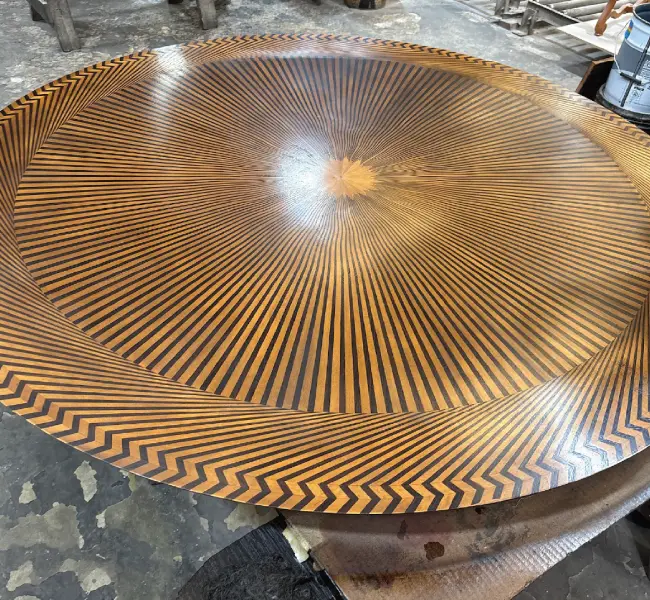
For any interior designer, aligning with the artisanal movement is no longer a trend—it’s a responsibility. Today’s clients expect more than curated beauty. They’re looking for thoughtful leadership—someone who understands how to translate their vision into a home that’s emotionally resonant and entirely their own.
To meet this level of expectation, designers must offer more than access to beautiful things. They must bring:
- Deep knowledge of craft and culture, with the ability to authenticate provenance and protect clients from fraud or misrepresentation, ensuring every piece holds genuine value and meaning.
- A cultivated network of artisans who understand the nuances of luxury and legacy.
- Expertise in custom furniture design, from prototype to final placement.
- An eye for blending heritage with innovation, creating spaces that feel timeless yet personal.
At IMI Design, each interior project is approached as a living canvas—where form, function, and feeling converge. Under Anita Lang’s thoughtful direction, the work is guided by architectural precision and a deep reverence for story, soul, and the human experience. From the refinement of millwork to the texture of a hand-finished fabric, every detail is selected with intention—not simply to impress, but to endure. To elevate the human spirit through luxury design. To create spaces that are not only beautiful but profoundly meaningful.
Conclusion: A Return to Meaning and Beauty
In a culture driven by convenience, the true essence of luxury is finding its way back home—to the handmade, the heartfelt, the human.
For clients who value artistry, story, and soul, handcrafted furniture isn’t just an aesthetic preference—it’s a philosophy. A statement of intention. A legacy in the making.
And for a luxury interior design company that understands this shift—one that knows how to weave together craftsmanship and emotion—this is a rare and remarkable moment: a chance to create homes that don’t just look beautiful but feel alive with meaning.
Because, in the end, true luxury isn’t about having more.
It’s about living more deeply—with pieces that matter.


